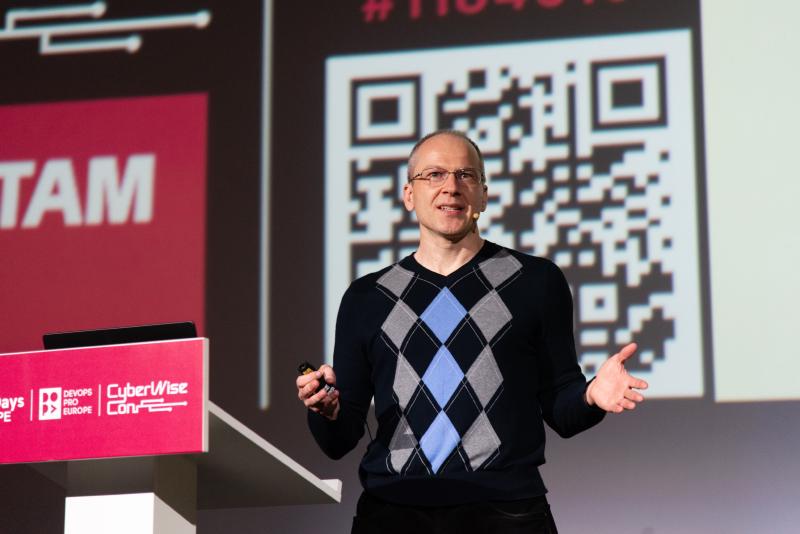- Monday: Arrival
- Tuesday: Speaker’s dinner
- Wednesday: Panel discussion
- Thursday: Showtime
- Friday: Conclusion
Giving the first speech at a conference was an emotional rollercoaster. When I left home, flew overseas, checked into the hotel, and unpacked, there was a constant undercurrent of anxiety that was not going away. And it was going to stay with me for the next several days. Every so often, I remembered what was coming, and my stomach tightened, a wave of vulnerability washing over me. There was a heavy fear of the unknown—I’d never been to this city, the audience was not Americans, and the conference was held in a movie theater. The anticipation was exhausting, yet I couldn’t relax.
I will never forget the DevDays Europe 2025 conference. When an experience is highly charged—whether with fear, excitement, anxiety, or even joy—the brain marks it as important, and we remember more details about it. This situation is called emotional arousal, and it’s why people remember things like their first kiss, a car accident, or, in this case, a first conference talk. So the anxiety, vulnerability, and fear you feel before your first big speech don’t just make it more challenging—they also make it unforgettable.

The MC introducing the next speaker. Photo courtesy of Data Miner.
Monday: Arrival
Of course, I knew I was going to be anxious. At the start of my career, I attended Toastmasters over 20 years ago, and I knew all about the fear of public speaking. I knew the best weapon against this fear was preparation. So, I prepared. I started on my slide deck two months before the conference. One month before, I finished the deck and recorded two dry runs of my talk. Fleet’s co-founder, Zach Wasserman, helped me with the slides and provided invaluable feedback. I did four more full dry runs of the 1-hour talk, tweaking the talk a little bit each time. And yes, preparing and practicing the talk took way longer than expected.
One hour is a long time for a talk. During practice, I noticed my mouth was drying, and I began losing my voice around 40 minutes in. I don’t talk much during my typical day, spending most of my time coding. I just needed more practice talking this long in a single stretch.
I also noticed that I was getting tired halfway through my talk and had difficulty keeping my energy level up. I tried to motivate myself and give myself a pep talk:
- I’m an experienced software engineer, and I like to encourage and teach others
- The audience is my people—engineers, and I want to spend time with them
- This is an exciting new experience, and I should be excited
I missed my connecting flight in Frankfurt due to slow passport control and arrived Monday evening. The conference started on Wednesday, with a speaker’s dinner the night before. I arrived early to be well-rested for the speaker’s dinner and the conference. I also didn’t eat on the plane to try and help my body adjust to the 8-hour time change.
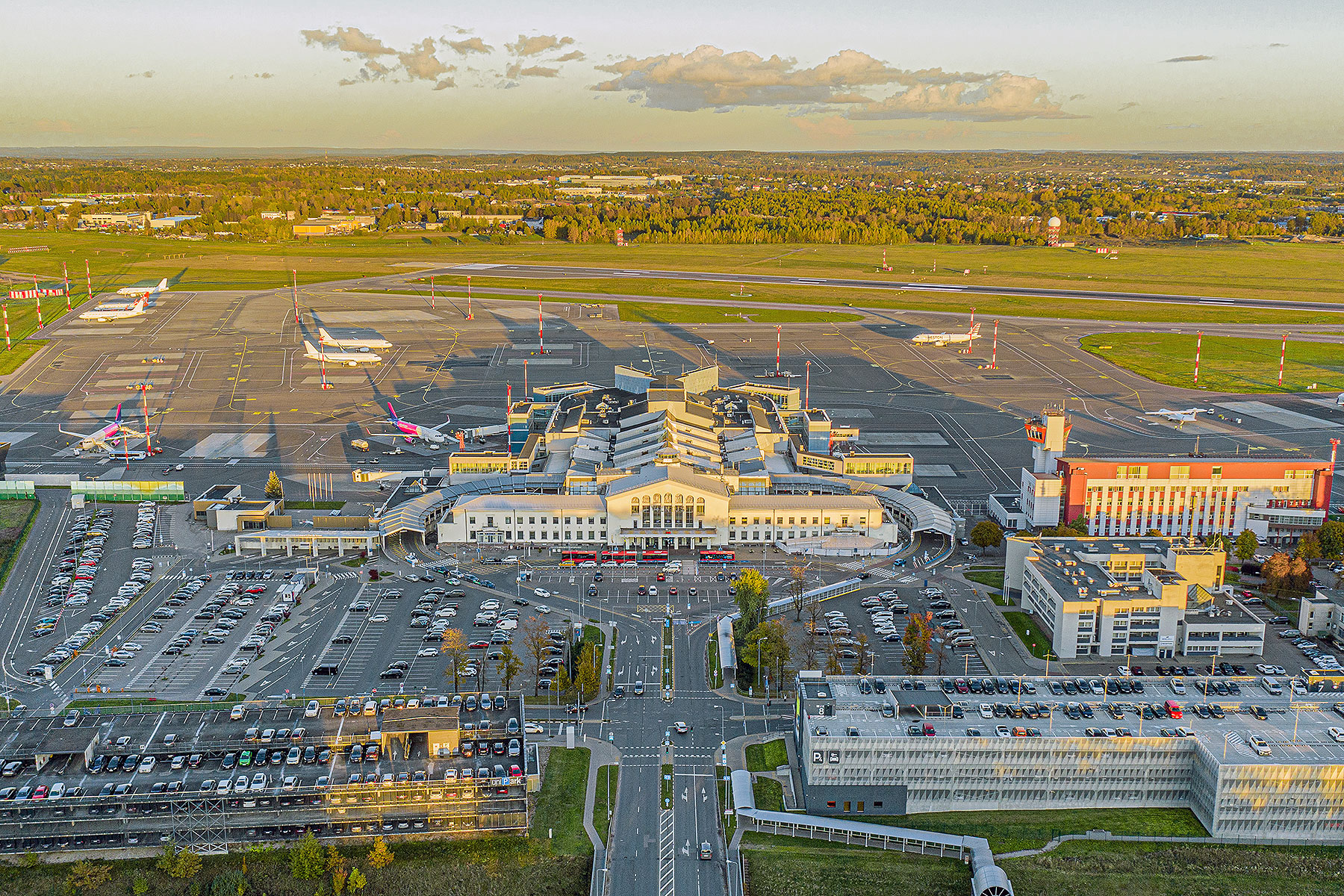
Photo by Augustas Didžgalvis
The conference organizers set up a WhatsApp chat for the speakers. The chat was very active, with people discussing their arrival times and things to do around town. It was great to have a community on arrival already.
Tuesday: Speaker’s dinner
I worked, practiced my talk, and visited a local grocery store during the day.
In the evening, I walked to La Boheme restaurant from my hotel. At the drinks reception, I spoke to many Europeans. However, I had a hard time understanding their accents at first. The thought running through my mind was, why did I apply to a European conference? I can’t even understand these people. This is going to suck.
Yes, it seemed difficult to understand some accents initially, but my brain adjusted to the patterns, and it was fine.
I had a great time with the other speakers, including a long chat with Paul Conroy about AI and other topics. One of the top benefits of conferences is chatting with other really smart people who are curious and passionate about technology.
After dinner, we took a walking tour of Vilnius Old Town. This outing was also a great decision by the organizers, as I probably wouldn’t have done it myself.
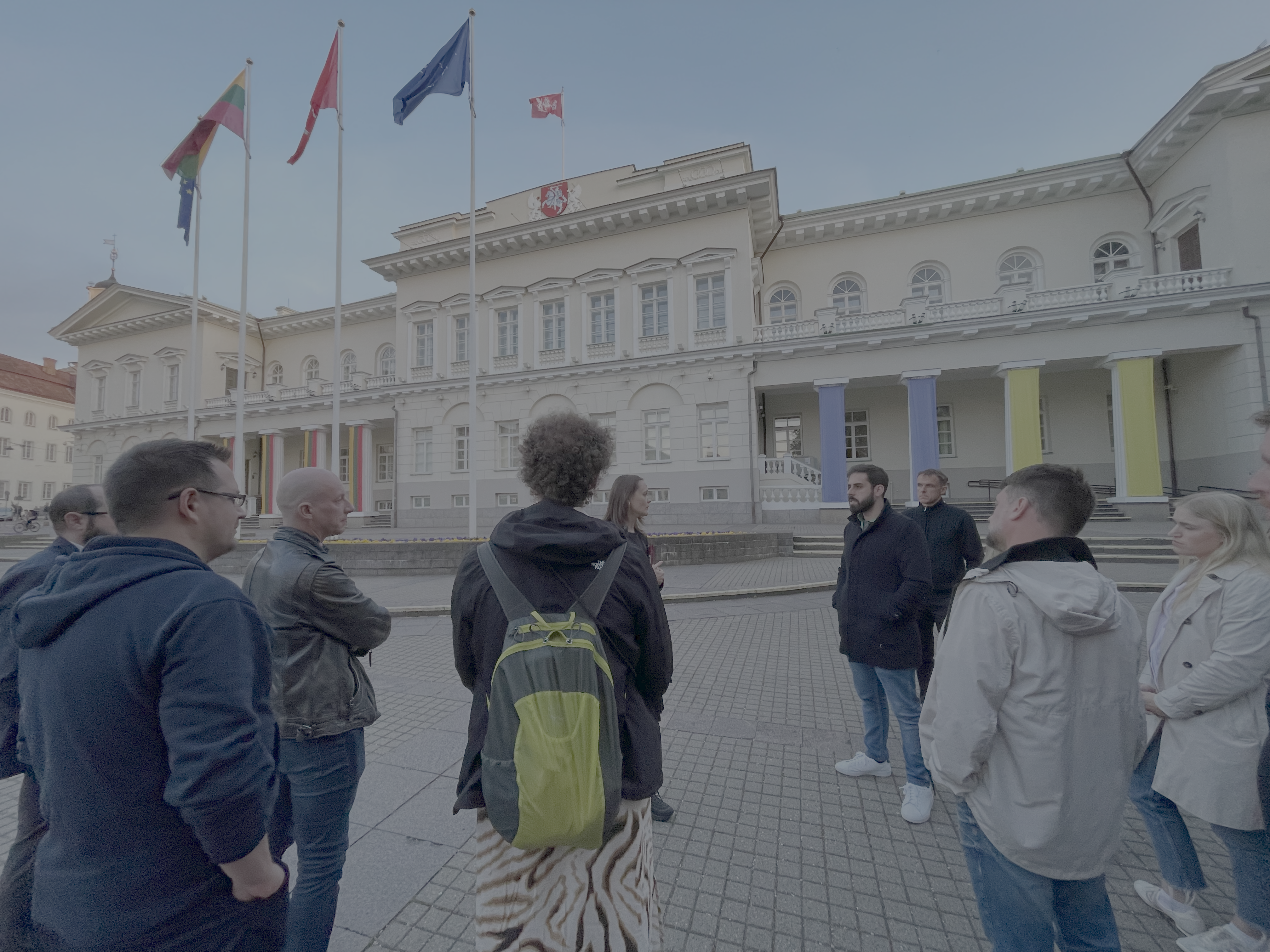
Tour guide talks about the Vilnius Presidential Palace
When I returned to the hotel after 10 pm, I had no interest in sleeping. I was excited by all the new experiences and anxious about the next day.
Wednesday: Panel discussion
I ended up falling asleep around 6 am and woke up with my 8 am alarm.
In the speaker’s chat, I saw that a couple of speakers could not make it to the conference, and conference organizers were looking for anyone to give another talk. Although I had ideas for other talks, I had nothing ready. Other speakers who had already given talks at different conferences jumped in.
When I arrived at the conference, its scale hit me. All these professionals were mature, intelligent, technical people. Hundreds of people. Most of them were going to watch my talk. It was unbelievable.
I came to the main hall and sat down for the keynote. It was the biggest auditorium in the movie theater. There were many volunteers, an MC, and an audio-visual technician controlling the excellent sound system, the giant extra-wide screen, and the bright lights for the stage. There were also video cameras and photographers. Wow, talk about intimidating for a first-time speaker. Were they expecting a TED talk from me?
Suddenly, the lights dimmed, and a male acrobat came out and started dancing on a pole. Then, he was joined by a female acrobat. I thought, where am I? That’s not something I expected at a conference. Wait, will there be a show like this before my talk, too?
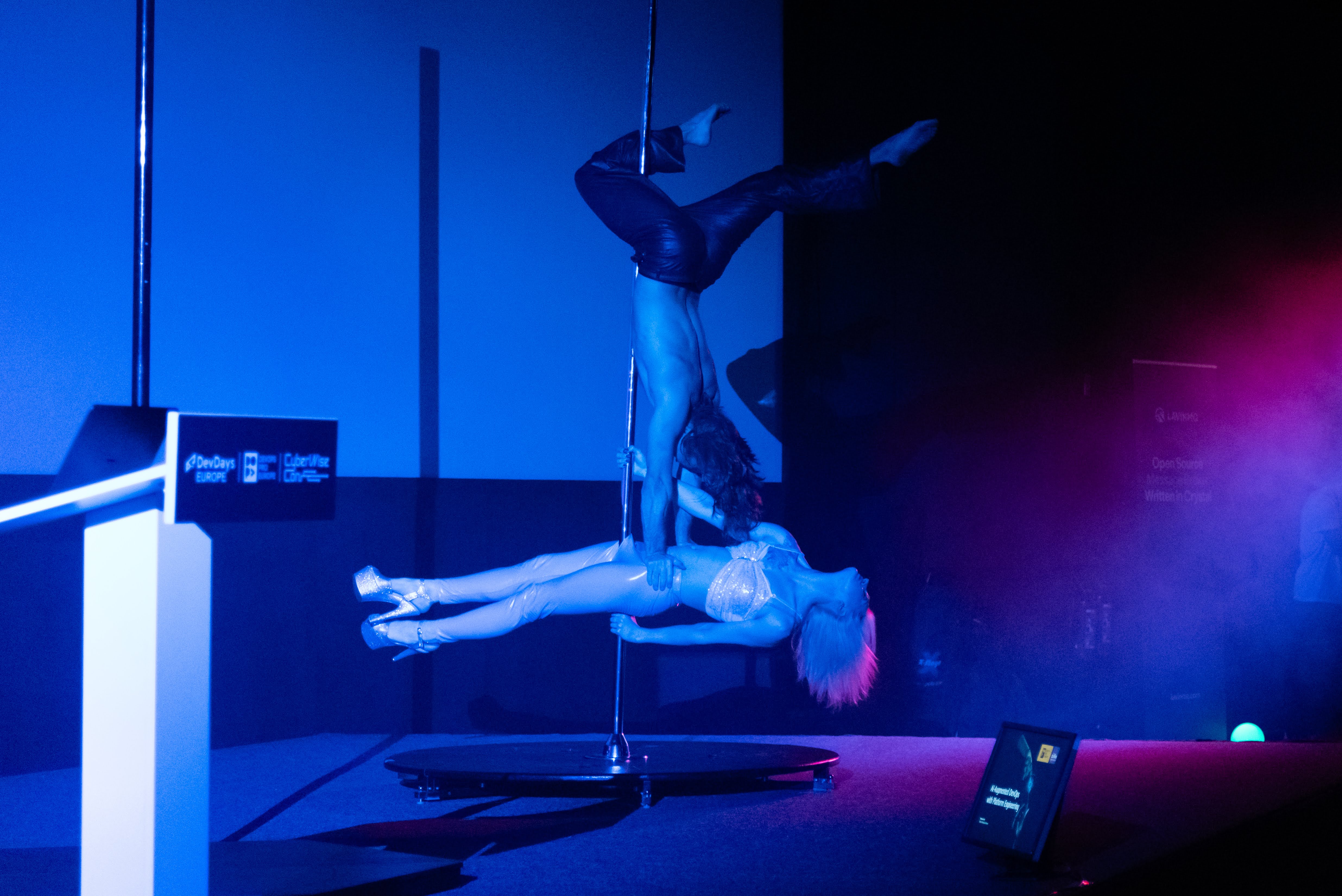
Photo courtesy of Data Miner.
The opening keynote speaker, Romano Roth, was great. I noticed he used a hand-held clicker to advance the slides, which also doubled as a laser pointer. Wow, I didn’t even think of that. A fellow speaker mentioned that presenters typically bring their own clickers to conferences.
A few months ago, after my talk proposal was accepted, Ugne Krasauskaite, the organizer, asked who was interested in participating in a panel. At first, I wasn’t sure—wasn’t one talk enough, and wouldn’t I already be stressed? Apparently not. When I do something, I want to do it right, and I want to do it all. I was going to be at the conference anyway, so I figured I might as well get some experience with my first conference panel.
So, my panel was on the first day of the conference, and my talk was on the second. I would get the lay of the land and practice being on stage.
Like a good boy, I wanted to prepare for the panel—to know what I would say and the questions the moderator would ask. However, that’s not always the case. The moderator may not tell you the questions upfront or rely on the audience for the questions. I figured this was my first time on a panel, so I could always say, “Yes, I agree with my fellow panelist.”
The panelists got hand mics. When Kenneth Rohde Christiansen, the moderator, introduced me on stage, I started speaking and immediately heard my voice boom via the movie theater speakers. I knew my mic was on.
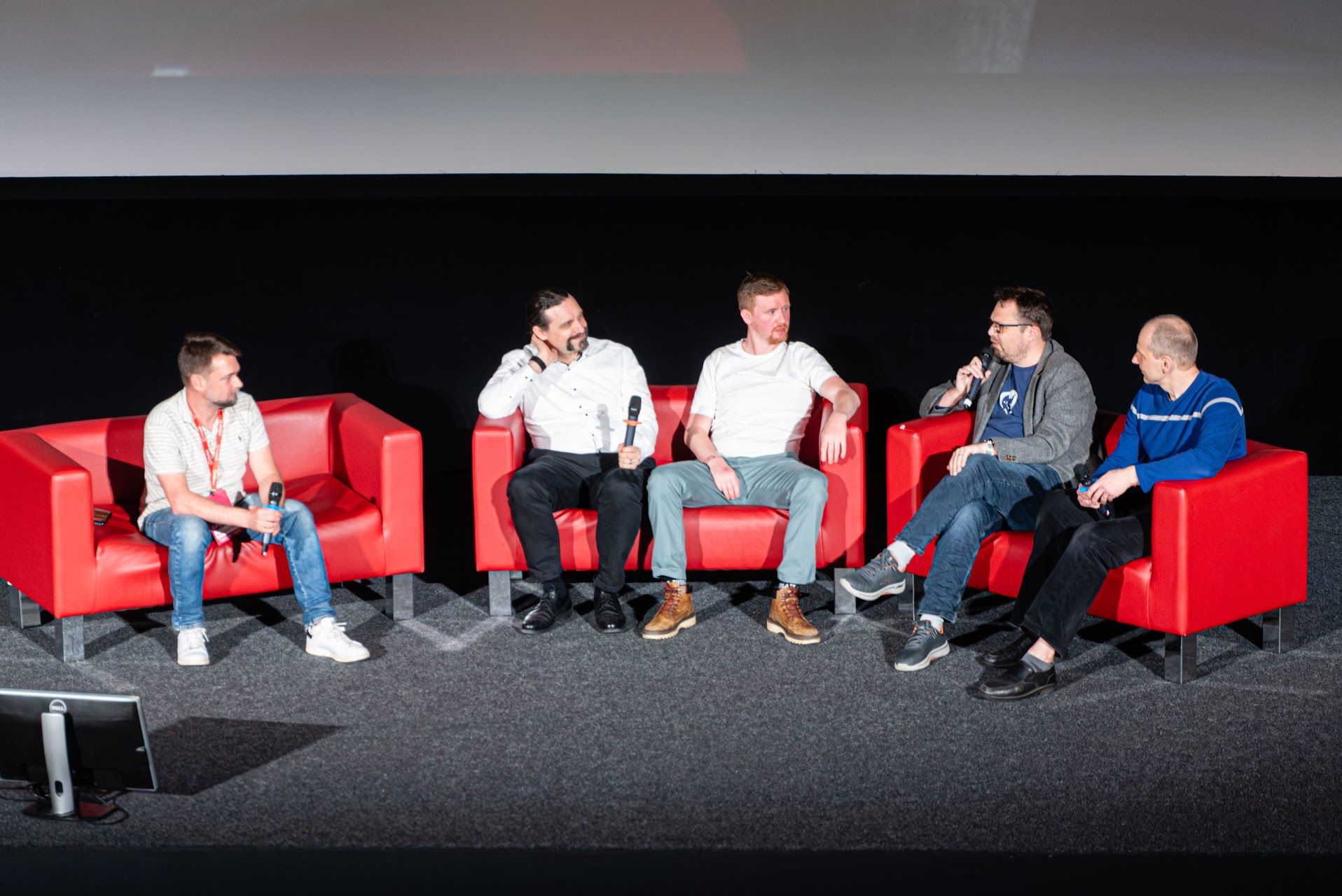
Photo courtesy of Data Miner.
I was nervous the whole time. It was like a job interview—I didn’t know the questions, but I better have some good answers. My fellow panelists were extremely knowledgeable and impressive. I was glad to ride on their coattails and make a comment here and there. The other panelists were Romano Roth, Paul Dragoonis, and Alex Olivier.
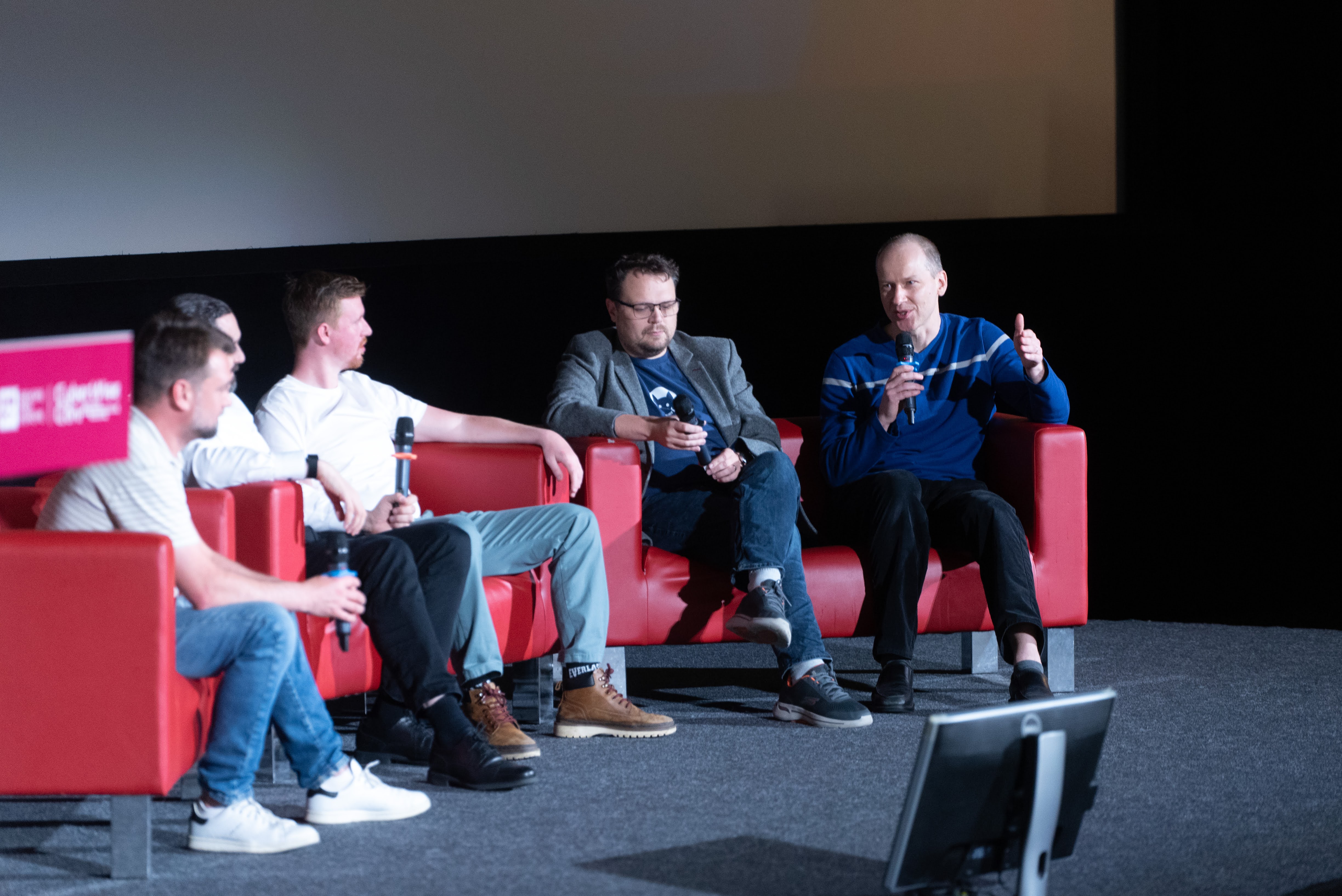
Photo courtesy of Data Miner.
After the last talk, I asked the audio-visual technician if I could test the connection. It was pretty straightforward. There was a USB-C hub that you plug into your computer. The hub connects the external monitor and the presentation clicker. I was glad I would have a hand clicker. A monitor in front of the stage showed what was presented on the massive screen behind the speaker.
I do not recommend being jet lagged for your first conference talk. Since I didn’t sleep the night before, my brain felt like goo. I wanted to meet up with fellow speakers after the day but also needed sleep. Back at the hotel, I took a sleeping pill and slept for 11 hours that night.
Thursday: Showtime
I’ve been in tech for over 25 years, but why didn’t I speak at a conference before? The simple answer is that my career and personal goals never really aligned with conference speaking. I was always looking to do something different in my career than what I was doing at the time. Whether it was to get a master’s, switch my technical area from hardware to software, become a manager, try to get my startup off the ground, etc. Speaking at conferences seemed like a huge time-sink that wouldn’t help me with my shorter-term goals. Also, I didn’t think conferences were valuable due to travel time, preparation, and time away from potentially more useful activities.
So, what changed? I’ve gotten calmer and more mature. I decided to try out conference speaking and see if I liked it. Also, as a senior developer at Fleet, getting external exposure seemed like a good idea. Plus, I had written enough blog content to repackage some of it as conference talks.
On the day of my talk, I put on the nice sweater my wife packed for me. “You’re going to Europe,” she told me, “so you need to dress properly.” The day was humid and warm, so I started sweating when I got in the Uber to go to the venue. The sun was shining at me through the window of the moving car, which made things even worse. I moved to the other side of the vehicle, and the driver looked at me suspiciously. I ended up sweating most of the day.
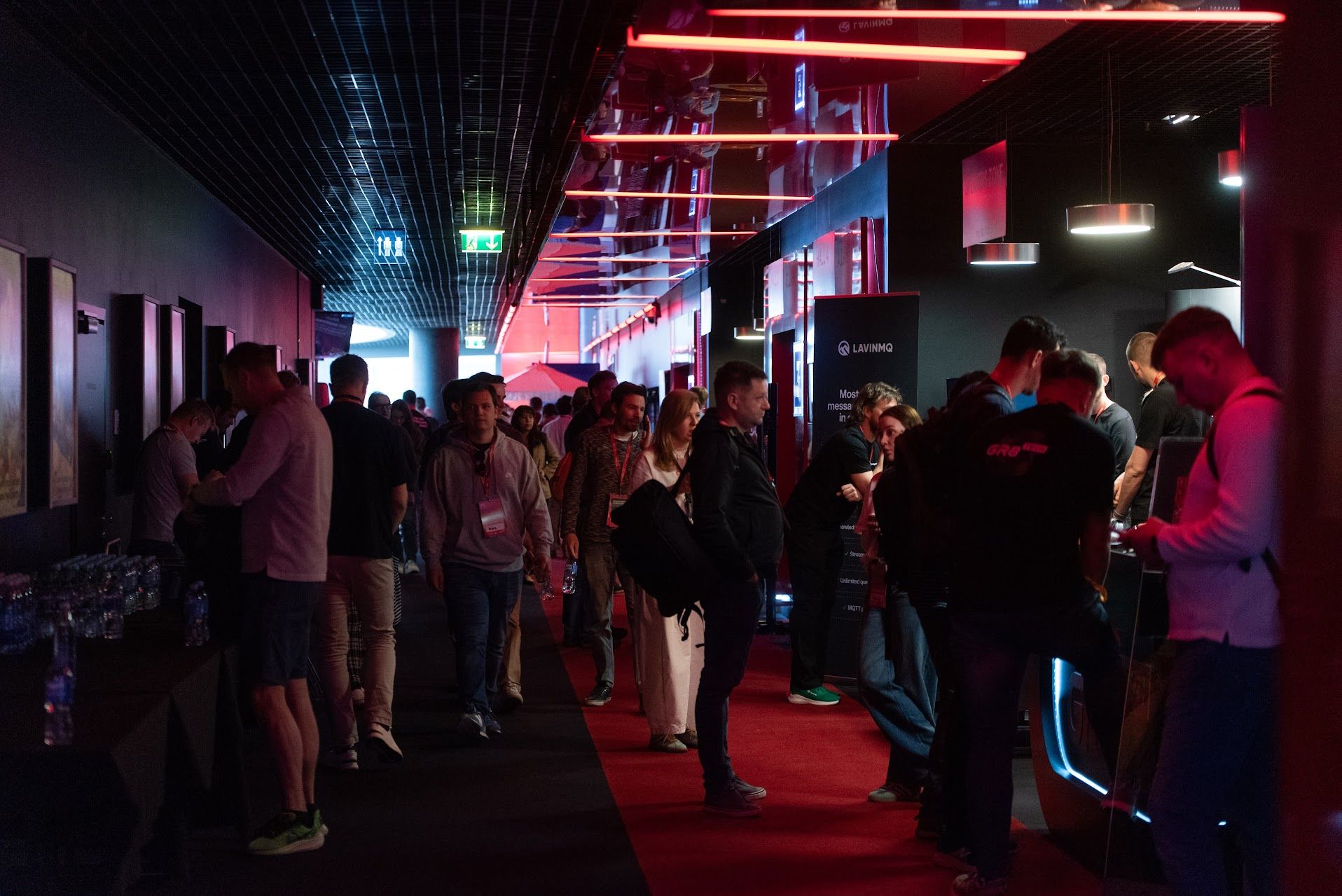
Photo courtesy of Data Miner.
My talk was the closing keynote of the day. As I watched other people’s talks, I saw that they all used a dark theme—a dark background for their slides—and it looked great on the large movie screens. My talk used the light Fleet template. Well, I thought, I can’t do anything about that now.
I spent the hour before my talk in the speaker’s lounge. I reviewed my slides and then sat there, paying attention to my emotions. I wished my talk was over already. I reminded myself that this was an exciting experience, and I should savor it. Then, I walked down into the main hall where I would be presenting.
“You look pretty calm,” Mattias, a conference volunteer, said.
“Well, I prepared as much as I could. Can’t do much else at this point,” I replied.
I left my phone and my conference badge in my bag. The audio-visual technician put on the Britney Spears mic and attached it to my clothes. I was ready to go.
I remembered another piece of advice—ask someone to take pictures of you so you can share them on LinkedIn. Although the conference had professional photographers, those pictures would not be available for a few days. I asked Ricky, the MC, to take some photos of me.
There were no acrobats before my talk, but there was a group game where people could win prizes. People were pouring in—I’m guessing around 300 people in the seats.
The game consisted of 10 multiple-choice questions, and people voted with their phones. As I sat there watching, I wondered how weird it would be if I were also playing this game and then I won.
And then it was time—time for action, time to let my practice take over. There was no time to think or worry. Stick to the script, try to make eye contact with the audience, and move around once in a while.
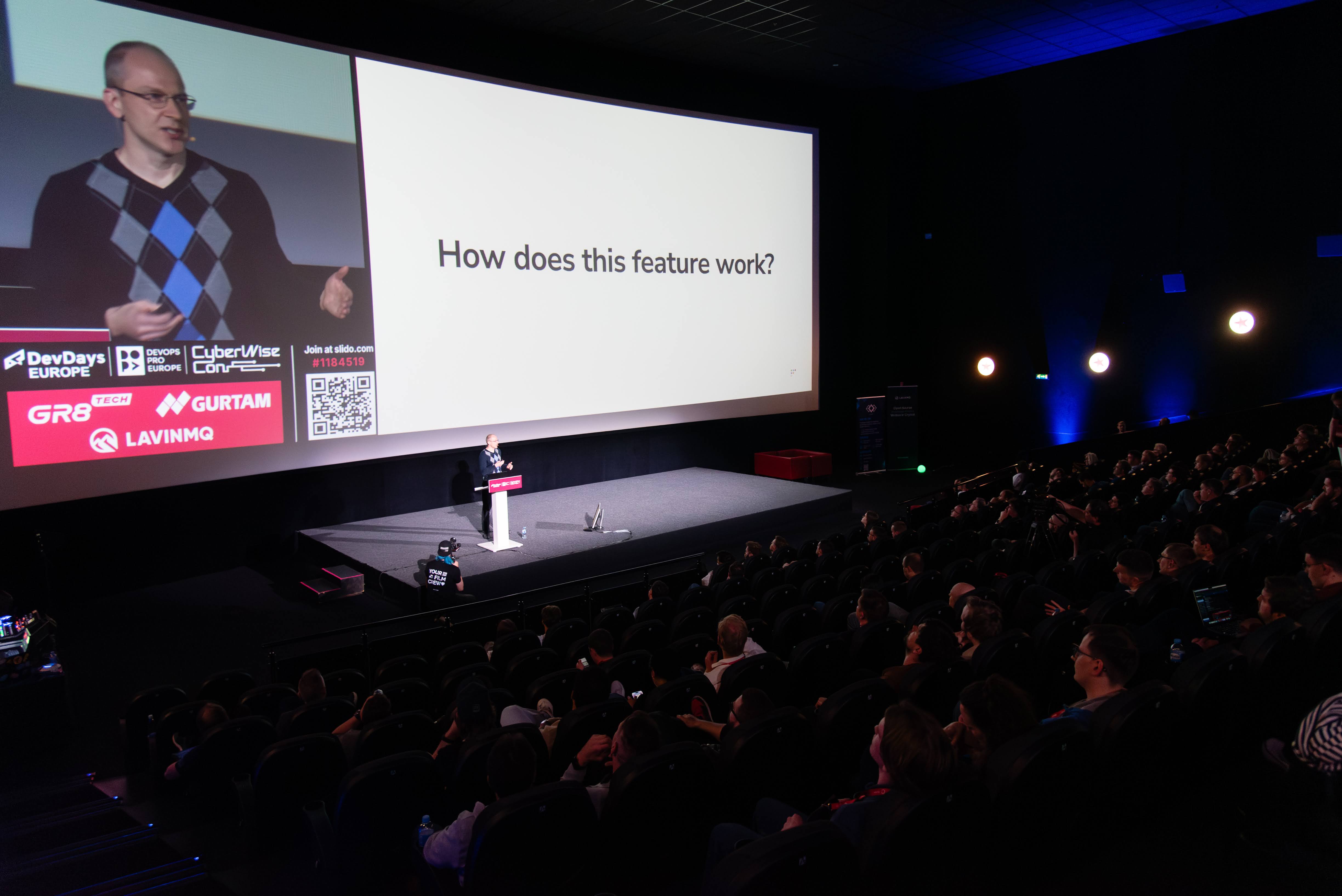
Photo courtesy of Data Miner.
The clicker may have been a mistake. To use the laser, I always looked down to make sure I was pressing the right button. Miro Horacek later told me he saw me having trouble with the thing. I didn’t think it was so obvious at the time. The lesson here is to practice with the clicker. You want to be pressing the right buttons without having to look down.
About halfway through the talk, my nerves calmed down. I felt so calm that it was weird. I felt like I was simply talking to another engineer next to me. It’s unbelievable how the brain works and how quickly you can get used to the patterns around you. I was in front of a giant screen, in the bright lights, with 100s of people looking at me (plus some unknown number watching the live stream). This calm experience is often called settling in or stage comfort.
I finished my presentation five minutes faster than any of my practice runs. Afterward, I answered a few questions. I didn’t understand a couple of them, so I asked the person to come to talk to me afterward.
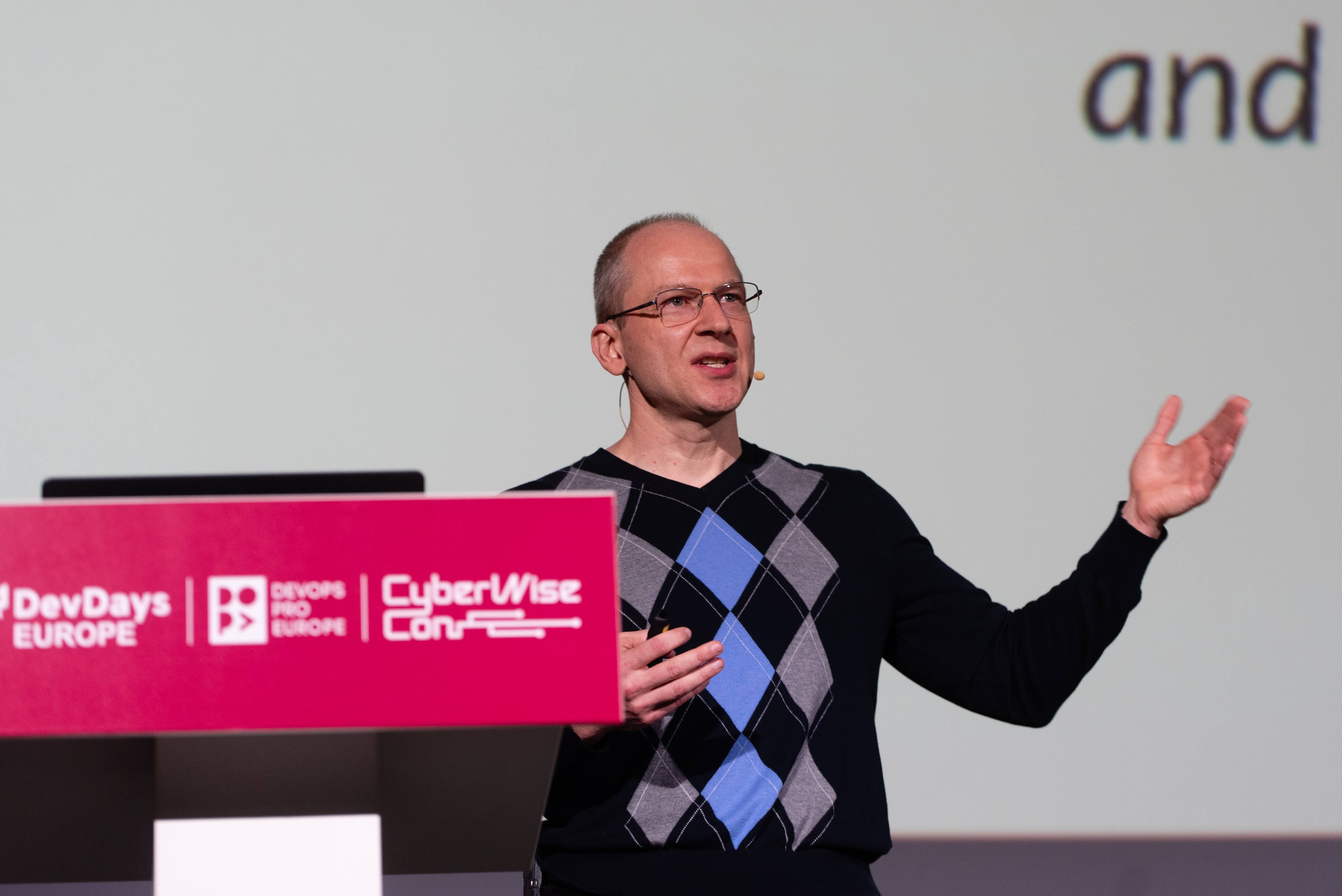
Photo courtesy of Data Miner.
Ricky forgot to take pictures during my presentation, so I got back up on stage, and he took one as if I were still presenting.
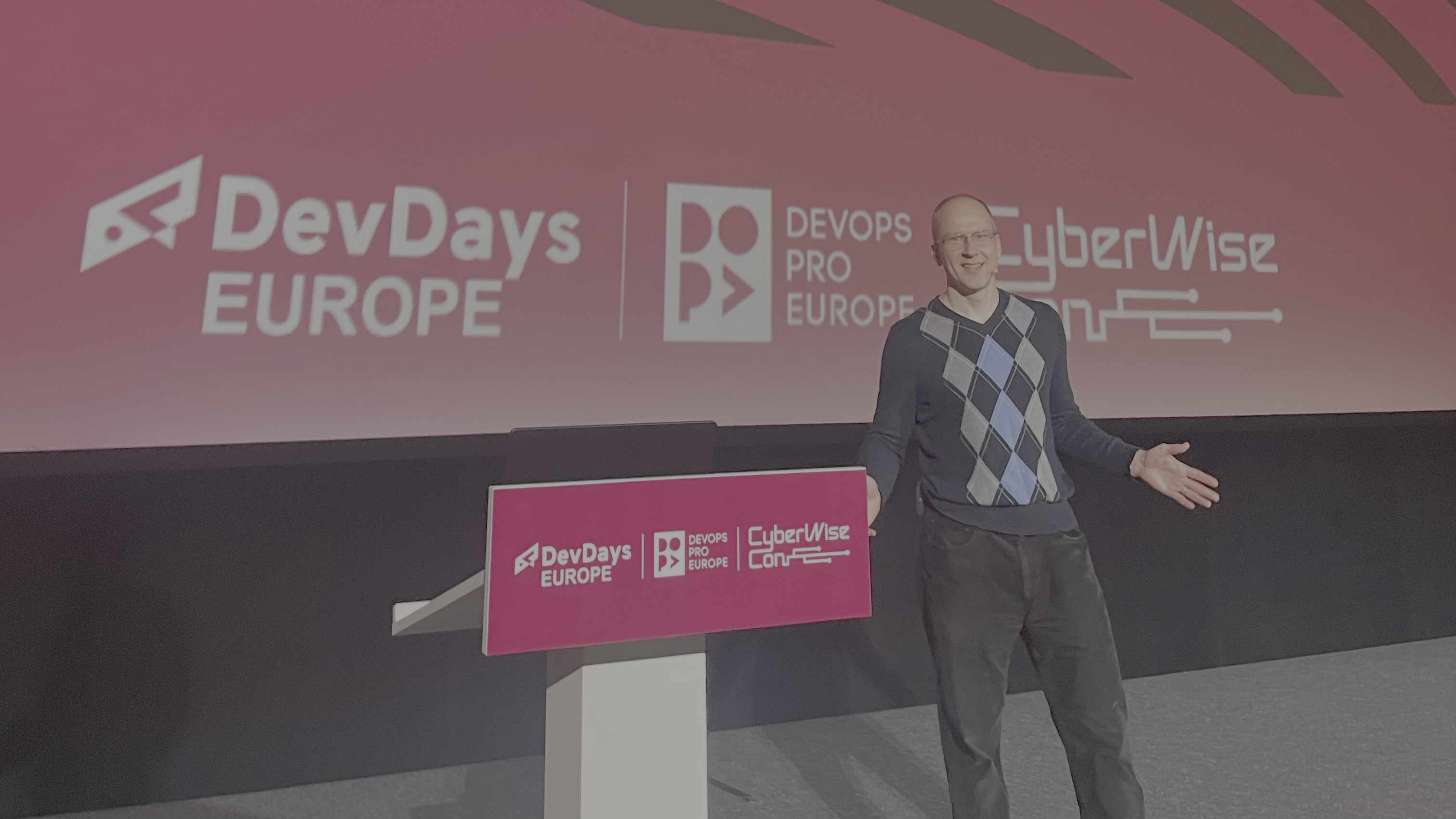
I was high with excitement and relief as I headed to the after-party. Several people made positive comments about my talk. It felt like a great evening. I was riding the post-performance high (also known as speaker’s high). This high was so nice that I could see how it could be addicting—you purposefully put yourself into high-stakes public events to get it.
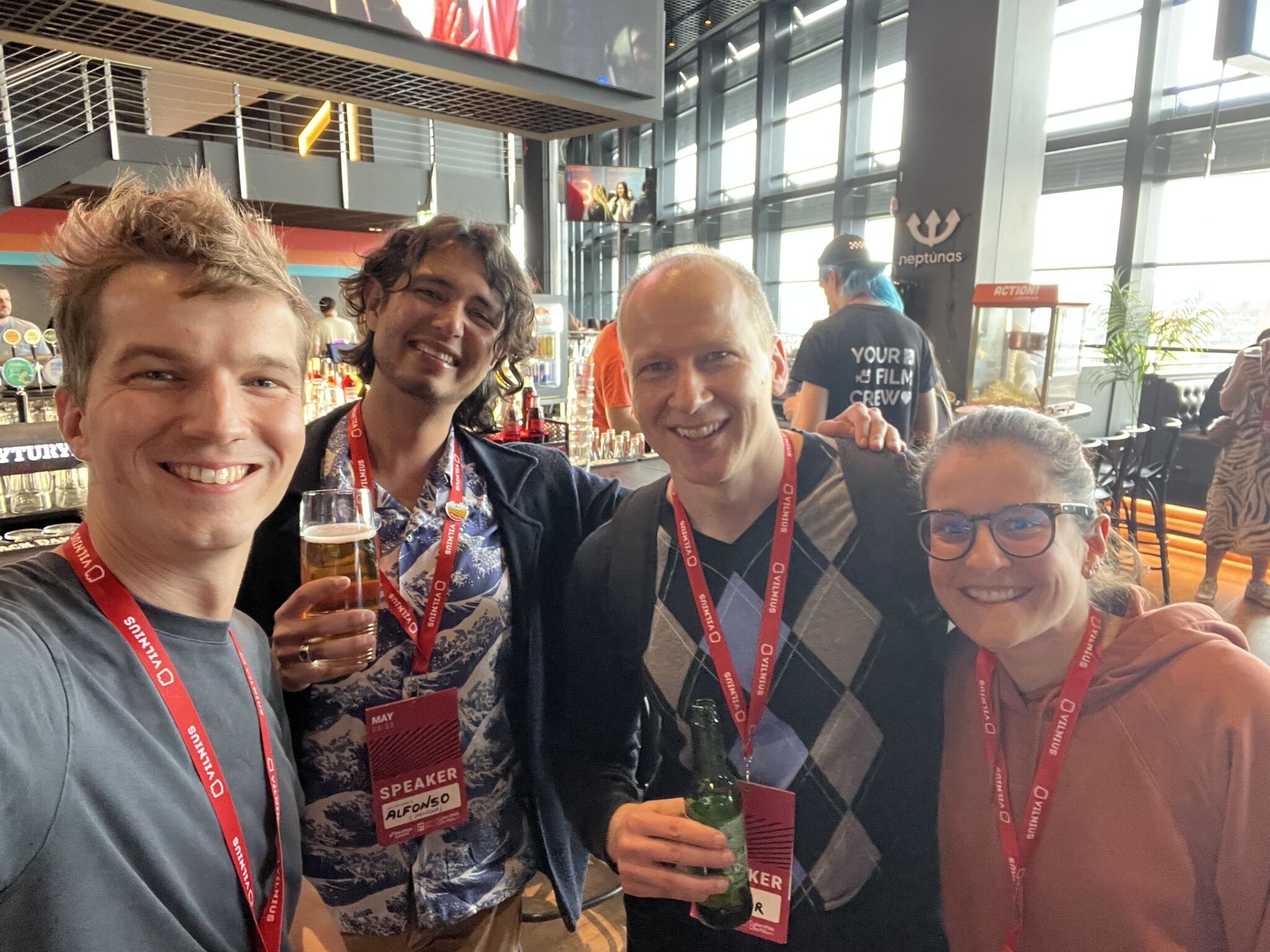
Jon Bennalick, Alfonso Sandoval Rosas, Victor Lyuboslavsky, and Eleni Grosdouli
After the party, I had a great dinner with three other speakers, Jon Bennalick, Kalle Sirkesalo, and Miro Horacek.
Friday: Conclusion
I attended a couple of panels on Friday, and I noticed that when a panelist was speaking, they were on camera and taking up the entire giant screen behind them. Now that’s a close-up. It’s a good thing I wasn’t aware of that during my panel.
Besides the great talks, a considerable value of the conference comes from talking with other smart people, also known as the hallway track. As a speaker, it felt easy to start a conversation with other speakers by asking about their talk, etc. A few people approached me to discuss my talk, and these discussions were also educational.
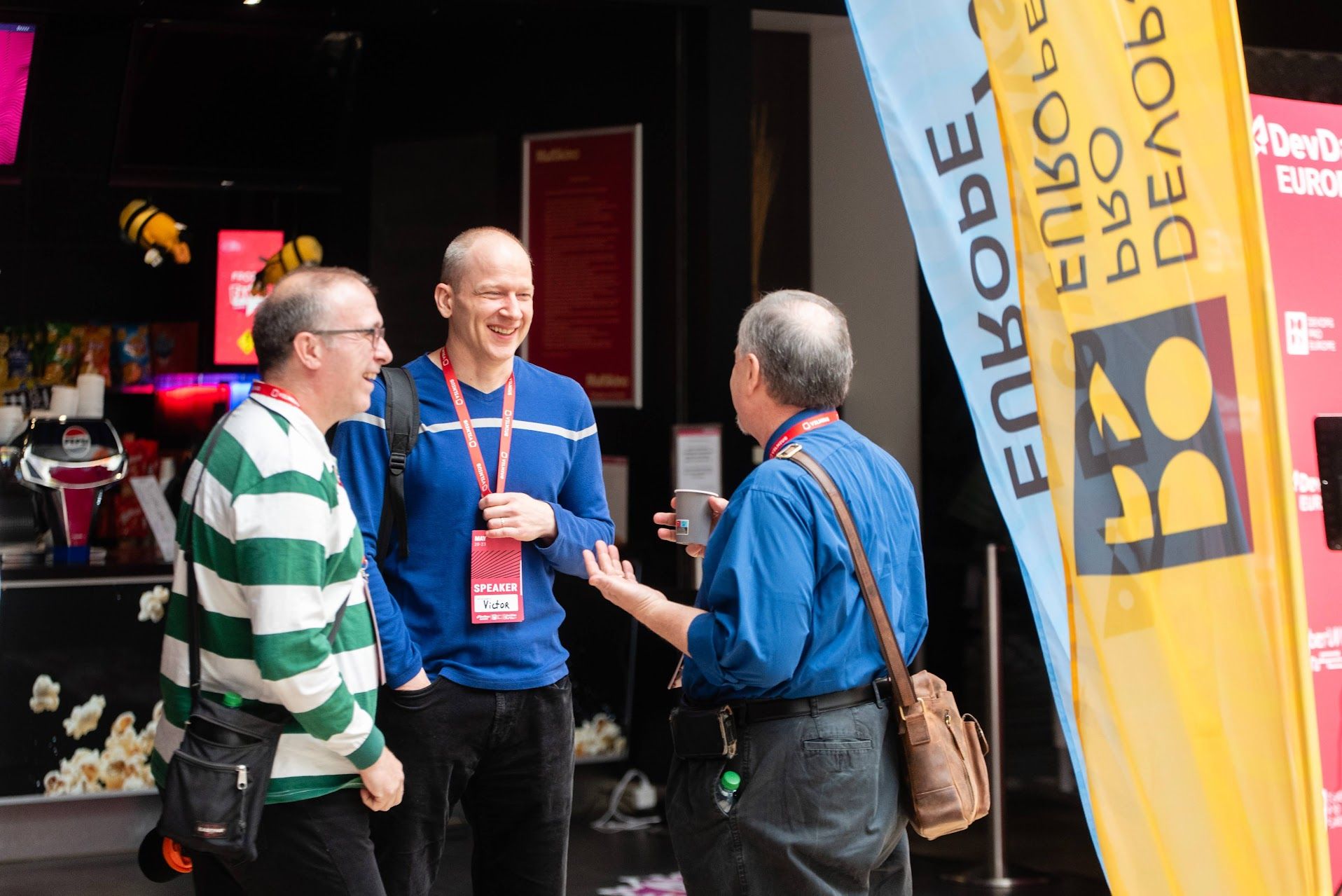
Photo courtesy of Data Miner.
People tend to be friendlier and more open in any new situation, such as a conference. So, I left my comfort zone and talked to other engineers. It’s not often that you get so much technical talent in one place. I had some great conversations with Dmytro Sukhariev.
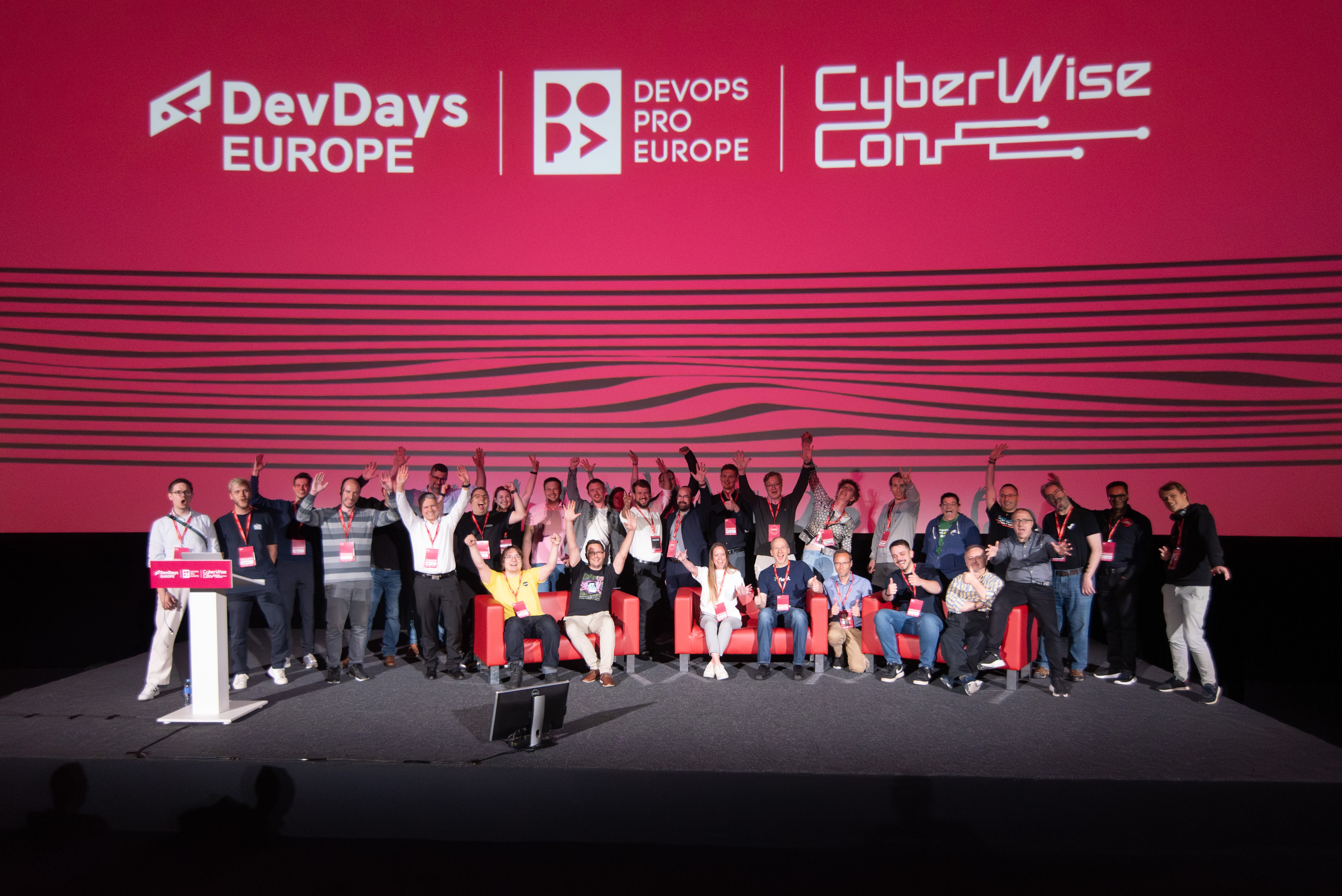
Speakers' photo. Courtesy of Data Miner.
Further reading
The original article the talk was based on: Readable code
Keynote | Readable Code: The Secret to Clean, Productive Software
Panel Discussion | Building the Future: Trends in Modern Application Architecture
Watch me discuss my first conference talk experience
Note: If you want to comment on this article, please do so on the YouTube video.
